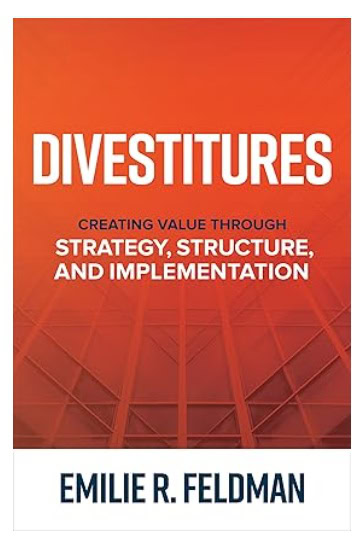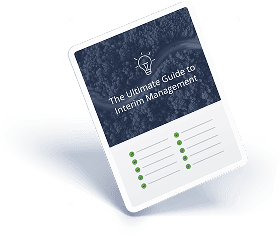The strategic playbook of most companies focuses on growth through mergers and acquisitions. But that focus on M&A deals overlooks one of the most powerful tools in their arsenal: a clear, proactive divestiture strategy. The strategic shedding of underperforming assets can be a robust engine for value creation and an essential component of dynamic portfolio management for boards, C-suite executives, and private equity funds.
“While there’s plenty of evidence to suggest divestitures can create more value for shareholders than acquisitions, only about 30% of S&P 500 firms engage in them annually,” says Emilie Feldman, professor of management at Wharton and author of Divestitures: Creating Value Through Strategy, Structure, and Implementation.
This underutilization, she posits, is partly due to a psychological bias: “M&A is associated with positive terms like ‘growth’ and ‘opportunity,’ while divestitures are linked to negative terms like ‘failing’ and ‘lagging.'”
Overcoming this misperception is critical to unlocking substantial enterprise value.
The Stigma Around Letting Go
The stigma of failure often leads companies to avoid divesting parts of the business even when it’s clearly the right strategic move.
Feldman describes two types of divestitures:
- Reactive: Triggered by failure, declining industries, or bad acquisitions.
- Proactive: Done to sharpen strategic focus, even when the divested business asset is profitable.
“The market often conflates the two,” Feldman notes. “Even a smart, proactive spin-off gets treated as a reaction to failure. That’s where boards need to reframe the narrative.”
When to Divest: Proactive Portfolio Sharpening
Boards must consistently challenge the status quo by applying a rigorous “better-off test” to every business unit within the enterprise. The core question should be: “How is owning this business making us better off as a company?”
Lack of a clear, compelling answer should trigger a critical review that includes considering divestiture. This systematic evaluation ensures capital is continuously allocated to its highest and best use, fostering agility and resilience.

How to Divest: Structuring for Optimal Outcomes
Divestitures generally take the form of a carve-out or a spin-off. Although the terms are often used interchangeably, there are some subtle differences:
- Sales (Carve-Outs): Representing approximately 90% of divestitures, direct sales of business units offer rapid monetization and an immediate cash infusion. However, decision-makers must carefully assess potential tax liabilities and the implications for the selling entity’s balance sheet.
- Spin-offs: Though less common (around 5% of divestitures), spin-offs can be highly attractive. These transactions involve creating a new, independent public company from a division. A key advantage is their potential to be structured as tax-free events for existing shareholders, thereby maximizing value retention. While requiring more complex due diligence and an independent public listing process, spin-offs can create two distinct, highly focused entities with greater access to capital markets and a clearer strategic narrative.
Sales to strategic buyers often generate higher premiums—about 60% more than financial buyers, thanks to synergy opportunities.
The Real Key to a Successful Divestiture
It’s what happens after the troublesome business unit is divested that matters most, Feldman says. The remaining entity will require comprehensive operational and external recalibration:
- Internal Reconfiguration: This entails meticulously “unwinding operations,” disentangling shared services, and rigorously “eliminating stranded costs” to prevent them from becoming an ongoing burden on the remaining core business.
- External Reconfiguration: Effective communication is paramount. This involves strategic rebranding of the parent company, clearly articulating the rationale for the divestiture, and proactively resetting stakeholder expectations across investors, customers, and employees to maintain confidence and minimize market disruption.
“You’re not just separating businesses. You’re reconfiguring your entire organization,” Feldman says. “Divestiture success requires planning for both sides of that equation.”
The Interim Advantage: Navigating Divestitures with Experienced Leadership
Successfully executing a divestiture presents unique challenges that can strain even robust in-house teams. These aren’t business-as-usual scenarios; they demand specialized expertise, focused attention, and a dispassionate perspective often difficult for existing leadership to maintain.
RED Team interim executives with specific divestiture experience are an invaluable asset for boards, C-suite executives, and private equity funds. They bring a ready-made playbook of best practices for disentangling operations, managing complex communications, mitigating risk, and restructuring after a sale.
In addition, their dispassionate external perspective offers crucial objectivity and neutrality, especially in legacy situations where there are strong emotional attachments to the underperforming business unit. Wired for action, interim executives can accelerate the divestiture timeline, minimize disruptions, and drive the process forward with vital speed and efficiency.
Divestitures Done Right
Top-performing organizations consistently demonstrate the power of shedding assets that no longer fit the core strategic mandate, thereby enhancing profitability, fortifying resilience, and ensuring sustained competitive advantage. Those include:
- GE’s breakup into three focused companies (healthcare, aviation, energy)
- United Technologies’ separation of unrelated business lines
- Kellogg’s spin-off of its North American cereal unit
- Unilever’s planned ice cream carve-out, exposing diseconomies of scale
- Coca-Cola’s sale of Odwalla, shedding a misaligned fresh-juice business
In each case, the divesting company sharpened focus and improved long-term strategic fit—a clear hallmark of a winning divestiture strategy.
Final Thought: Strategy First
What’s Feldman’s #1 takeaway for boards and business leaders?
“Understand your core. Really understand it.“ And have the courage to sell, spin-off, split-off, liquidate, or otherwise get rid of anything that no longer fits.
Frequently Asked Questions
How do we identify if a business unit is a candidate for divestiture, even if it’s profitable?
Identifying a divestiture candidate, even when profitable, hinges on applying a rigorous “better-off test.” This involves evaluating if the business unit genuinely enhances the parent company’s strategic focus, capital allocation efficiency, and overall enterprise value. If the unit operates effectively but doesn’t contribute synergistically to the core strategy, consumes disproportionate resources, or limits future strategic agility, it’s a prime candidate for strategic separation to unlock value for both the divested entity and the remaining core business.
How long does a typical divestiture process take from decision to completion, and what are the critical phases?
The timeline for a divestiture can vary significantly, but typically ranges from 6 to 18 months, depending on complexity, regulatory requirements, and market conditions. Critical phases include:
- Strategic Review & Decision: Identifying the candidate and formalizing the intent.
- Preparation & Due Diligence: Gathering financial, legal, and operational data; setting up a data room.
- Marketing & Negotiation: Identifying potential buyers/investors and negotiating terms.
- Regulatory Approvals: Securing necessary antitrust and other governmental consents.
- Separation Planning & Execution: Unwinding shared services, establishing stand-alone operations, and transitioning employees and contracts.
- Closing & Post-Transaction Integration/Optimization: Finalizing the transaction and managing post-separation adjustments for both entities.
What are the biggest risks of a poorly executed divestiture, and how can they be mitigated?
The biggest risks of a poorly executed divestiture include stranded costs, operational disruption to the remaining core business, loss of key talent, negative market perception, and suboptimal valuation of the divested asset. Mitigation strategies include:
- Thorough Pre-Diligence: Deeply understanding the interdependencies and costs associated with separation.
- Detailed Separation Planning: Creating a robust, actionable plan for untangling operations, IT, and shared services.
- Effective Communication: Proactively managing internal and external messaging to maintain stakeholder confidence.
- Retention Strategies: Implementing programs to retain critical talent in both the divesting and divested entities.
- Strong Leadership: Appointing experienced leaders to manage the complex separation process.
Read More:
- How To Do a Reverse Merger Into a Public Shell Company in 9 Not So Easy Steps. Or SPAC in 10!
- Interim Executive Recruitment: Making the Right Match
- M&A IT: The Overlooked Key to Deal Success
____
Do you need help developing and implementing a divestiture strategy? A rock-star interim or fractional executive with extensive experience doing just that is the answer! Reach out to us for a confidential conversation about how a RED Tea executive can get your organization on track.








